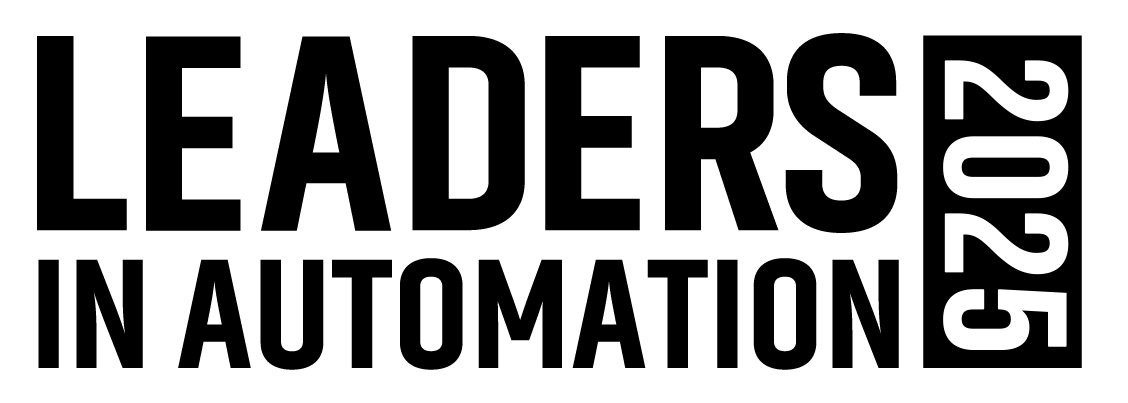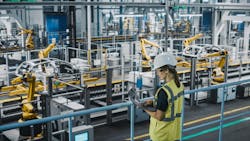Inside Schneider Electric’s New Industrial Copilot with Aurelien LeSant
- Schneider Electric's Industrial Copilot reduces automation engineering development time through AI-powered code generation, automated testing and analysis of legacy systems and process documentation.
- Using Microsoft’s Azure AI infrastructure, the Industrial Copilot is trained on data from Schneider's World Economic Forum-recognized Lighthouse factories, ensuring practical, industry-tested AI capabilities.
- Schneider Electric says the Industrial Copilot enables manufacturers to reconfigure production lines in hours or days instead of weeks or months to improve operational agility.
In 2024, Automation World gave a heads up to its audience about the coming proliferation of AI-powered copilots designed for use with industrial automation technologies in a manufacturing environment. Since then, several automation technology providers have released initial versions of these AI assistants while others have embedded this AI technology within their application-specific software packages.
At Hannover Messe 2025, Schneider Electric announced its Industrial Copilot as part of the company’s new software-defined automation environment called EcoStruxure Automation Expert Platform.
To learn more about this new copilot tech on the automation scene, we connected with Aurelien LeSant (AL), senior vice president of innovation and technology and chief technology officer for industrial automation at Schneider Electric.
AW: AI copilot technology has become a must-have for many automation technology suppliers. Beyond keeping up with market expectations, could you elaborate on Schneider Electric’s approach to developing its Industrial Copilot and how it differs from other industrial copilot tech?
AL: Our Industrial Copilot represents a strategic evolution of Schneider Electric’s long-standing commitment to open software-defined automation (SDA), a vendor-agnostic approach we pioneered over four years ago. Co-developed with Microsoft, the Industrial Copilot is more than just a productivity enhancer. It’s a domain-trained, context-aware assistant built on Schneider Electric’s deep industrial expertise and proprietary data.
Today, the Industrial Copilot predominantly supports the engineering and code generation phase of the manufacturing life cycle. This will be followed by code quality calibration and secure integration of proprietary customer knowledge.
What sets it apart is the seamless integration with our EcoStruxure Automation Expert Platform, offering a combination of universal automation and generative AI technology. What we believe is quite unique to us, is that the copilot delivers automation code support — as well as the analysis of process documentation and its conversion into an automation application structure — through its assets and their sequences. The Copilot thus acts as a trusted digital engineering partner, helping users accelerate development, reduce errors and optimize performance in complex industrial environments.
AW: We’re seeing different flavors of copilot tech coming out, for example, some are designed to address operations/maintenance issues while others are focused on code generation. Where do you see Schneider Electric’s Industrial Copilot fitting into the developing copilot landscape?
AL: Schneider Electric’s Industrial Copilot is purposefully designed to bridge the gap between engineering productivity and operational excellence. While many copilot solutions focus narrowly on code generation, we are going further to enhance engineering efficiency. The Industrial Copilot analyzes the process description and builds of the automation application structure, its assets and the sequences between them. It enables code generation, as well as the creation of documentation and unit tests.
These environments provide contextualized, domain-specific data that reflects the complexity and variability of modern industrial systems to ensures the Industrial Copilot is deeply aligned with real-world industrial challenges.
Beyond the Industrial Copilot itself, Schneider Electric is also advancing specialized industrial AI solutions for predictive maintenance, quality control and motion system optimization. These are all part of our broader vision for Industrial AI. Our recent announcement of new Nvidia-enabled rack solutions to accelerate the deployment of AI Factories at scale will also help scale the intelligence, adaptability and responsiveness of tools like our Industrial Copilot over time.
Looking ahead, our vision for the copilot is to evolve into an agentic system where the number of functions continues to grow and each capability becomes an intelligent AI agent. Rather than requiring users to manually select tasks, the system will intuitively understand the user’s intent and autonomously allocate the right agents to fulfill the request.
In short, our copilot isn’t just another AI assistant. It’s a cornerstone of the next era of industrial intelligence.
AW: Can you provide examples of how the copilot can be used to simplify processes for different types of users in the manufacturing industries?
AL: For automation engineers, the Industrial Copilot significantly reduces development time — between 30-50% — through features like automated code generation, intelligent test case creation, rapid comprehension of legacy code, and analysis of process documentation and automation structure. This helps engineers focus on innovation rather than repetitive tasks.
In addition, the code explanation feature comes in handy for automation engineers responsible for maintaining machines, production lines and plants which have been engineered years ago and for which the know-how has been lost. Thanks to its code explanation capabilities, the Industrial Copilot helps engineers understand how the asset was automated and enables them to quickly evolve asset functionality. The Industrial Copilot supports collaborative engineering with capabilities like co-authoring, version branching and distributed development to bring software development best practices into the industrial world.
Customers can fine-tune the Industrial Copilot through the feedback mechanism and by using their own data libraries through secure, cloud-based or on-premises integrations.
Take the example of designing a production line for a consumer packaged goods manufacturer. The Industrial Copilot proactively suggests complex functionalities, simplifies implementation steps and automatically checks for code errors. It leverages existing libraries and validated function blocks, and ensures the generated application, unit tests and documentation align with user specifications. This allows engineers to focus on high-value design and optimization tasks rather than manual coding.
AW: Why did Schneider Electric choose to work with Microsoft on this Industrial Copilot initiative? Are there specifics about Microsoft’s technology you can cite or is it related to Schneider Electric’s existing work with Microsoft?
AL: Schneider Electric chose to partner with Microsoft on the Industrial Copilot initiative because of the synergy between our deep industrial automation expertise and Microsoft’s leadership in cloud-scale AI infrastructure.
Microsoft’s Azure AI Foundry provides a robust foundation for deploying generative AI at scale, offering the performance, security and scalability required for mission-critical industrial environments. This enables us to embed AI directly into industrial workflows, ensuring that the technology is not only powerful but also practical and reliable for real-world use.
This collaboration also builds on a long-standing strategic partnership between Schneider Electric and Microsoft, which has consistently delivered co-innovations across cloud, edge and AI technologies.
In short, Microsoft brings the AI engine and we bring the industrial intelligence.
AW: Can you explain the training used to develop your Industrial Copilot models, especially as it relates to your use of Schneider Electric’s Lighthouse factory data?
AL: Our Industrial Copilot is trained on real-world, high-quality datasets sourced from Schneider Electric’s own automation software libraries, templates and operations, including our World Economic Forum-recognized Lighthouse factories that serve as testbeds for AI innovation. These environments provide contextualized, domain-specific data that reflects the complexity and variability of modern industrial systems. This ensures the Industrial Copilot is not only technically robust but also deeply aligned with real-world industrial challenges, enabling it to deliver high-accuracy, actionable insights from day one.
Thanks to its code explanation capabilities, the Industrial Copilot helps engineers understand how the asset was automated and enables them to quickly evolve asset functionality.
And while the Copilot synthetizes decades of best-in-class experience in engineering and automation systems, it also features a feedback mechanism for continuous model training.
AW: Beyond the training done by Schneider Electric, how do users train the Industrial Copilot on their own operations data to get started with it, and how is ongoing training handled and verified?
AL: Customers can fine-tune the Industrial Copilot through the feedback mechanism and by using their own data libraries through secure, cloud-based or on-premises integrations. This allows the Industrial Copilot to adapt to the unique characteristics of each facility or process. Continuous learning loops support the ongoing evolution of the Industrial Copilot based on real-time production data and user feedback.
AW: Do you have recommendations on how to train users of the Industrial Copilot to get the best results?
AL: Because the Industrial Copilot is a natural language model, no major training is required to get started. To maximize the value of the Industrial Copilot, we recommend a phased onboarding strategy. Begin with guided use cases such as code generation, error detection and simulation to build user confidence.
Regularly training the Industrial Copilot on organization-specific data ensures ongoing relevance and improved performance.
AW: Explain the integration of the Industrial Copilot into the EcoStruxure Automation Expert Platform and how it enhances EcoStruxure’s functionality.
AL: The Industrial Copilot is embedded within the EcoStruxure Automation Expert (EAE) Platform, Schneider Electric’s unified automation environment that offers a comprehensive overview and management of control applications including control logic, motion, HMI, safety and simulation. This integration enables real-time access to contextual data and strengthens cybersecurity and enhances system resilience.
By embedding AI directly into the automation lifecycle within the EAE Platform, the Industrial Copilot enables users to reconfigure production lines in hours or days instead of weeks or months, dramatically increasing agility and responsiveness.
AW: Is the Industrial Copilot available independently from EcoStruxure?
AL: Today, the Industrial Copilot is only available as a software module inside EAE platform. We believe it’s the way to bring added value through context-based engineering augmentation and provide best-in-class user experience with integration across Schneider’s full software suite. This approach also allows for the continued evolution of the Industrial Copilot as a potential assistant across all our software automation tools in the future.
More AI copilot coverage from Automation World:
About the Author
David Greenfield, editor in chief
Editor in Chief

Leaders relevant to this article:

